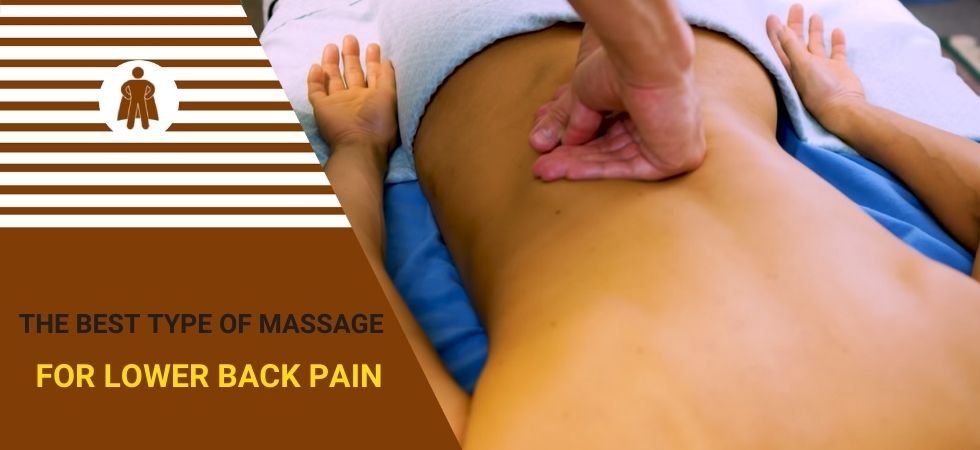The Best Type of Massage for Lower Back Pain
Contents
- 1 What Causes Lower Back Pain
- 2 How Massage Therapy Works
- 3 Types of Massage Therapies for Lower Back Pain
- 4 How to Choose the Right Massage for Your Lower Back Pain
- 5 Precautions and Contraindications for Massage
- 6 Using Back Massagers at Home for Lower Back Pain
- 7 The Role of Self-Care in Managing Lower Back Pain
Lower back pain, a common ailment affecting millions globally, can hinder one's daily routine and compromise the quality of life. While there are various treatments available, from medications to physical therapy, one therapeutic approach that has stood the test of time is massage therapy.
A holistic, non-invasive method, massage therapy not only promises relaxation but also offers numerous health benefits, including alleviating lower back pain.
The hands-on manipulation of muscles and soft tissues can help to improve blood circulation, ease muscle tension, and ultimately, relieve pain. But with a wide array of massage techniques out there, how do you know which one is the most effective?
This article aims to guide you through the journey of understanding lower back pain, the therapeutic potential of massage, and the best types of massages to alleviate your discomfort.
Whether you're a long-time sufferer of lower back pain or someone looking for preventive measures, our exploration into the world of massage therapy might just have the answers you seek. Buckle up and let's start our exploration into the healing world of touch therapy.
What Causes Lower Back Pain

The lower back, also known as the lumbar region, is a complex structure composed of interconnected and overlapping elements: vertebrae, discs, nerves, muscles, and other soft tissues. Any problem with any of these components can lead to discomfort or pain in the lower back.
Anatomy of the lower back
The lower back comprises five lumbar vertebrae, each separated by shock-absorbing discs that cushion the bones during activities such as walking, lifting, and twisting. Numerous muscles, ligaments, and nerves are also present, all interconnected and functioning together to provide support, strength, and mobility to the body.
Common causes of lower back pain
Lower back pain can stem from various issues, including but not limited to:
Mechanical problems: These involve the way your spine moves or the way you feel when you move your spine in certain ways. An example of this is intervertebral disc degeneration, where the discs located between the vertebrae of the spine break down with age.
Injuries: Sprains or strains can cause acute lower back pain. They often occur due to heavy lifting or a sudden awkward movement, which strains the muscles and ligaments.
Diseases: Certain diseases like arthritis or cancer can affect the spine, leading to lower back pain.
Infections and tumors: Although they are less common, spinal infections and tumors can cause severe back pain.
Symptoms associated with lower back pain
While the intensity and severity of lower back pain vary, common symptoms include muscle ache, shooting or stabbing pain, pain radiating down your leg, or reduced flexibility in your back. The pain may come on suddenly, due to an accident or lifting something heavy, or it may develop over time due to age-related changes of the spine.
The impact of lower back pain on daily life
Lower back pain can have a profound impact on a person's life. It can limit mobility, making it hard to carry out day-to-day activities. Chronic lower back pain can also lead to sleep disturbances, mood changes, and a lowered quality of life. Understanding the nature of your back pain is the first step towards finding effective methods to manage it, and massage therapy is a promising option for many.
How Massage Therapy Works
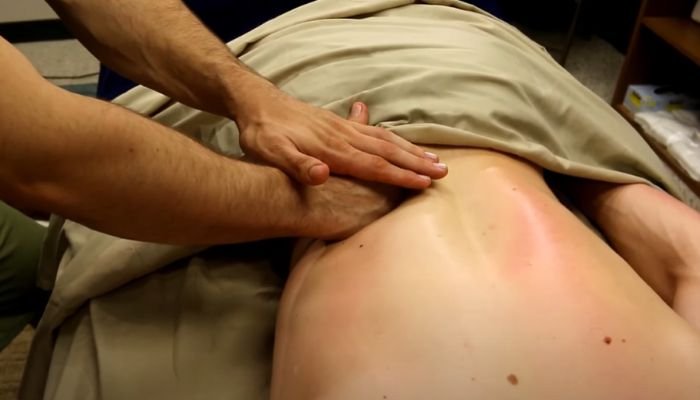
Massage therapy works primarily by manipulating the body's soft tissues to promote relaxation and wellness. It stimulates the nervous system, improves blood and lymphatic circulation, relaxes muscles, and reduces psychological stress. In the context of lower back pain, a massage can help to relieve muscle tension, improve flexibility, and reduce discomfort.
Beyond providing relaxation and a sense of wellbeing, massage therapy offers several health benefits. It can enhance immune function, boost levels of endorphins and serotonin - the body's natural painkillers and mood regulators, and reduce stress hormone levels.
It can also improve sleep, reduce fatigue, and increase energy levels. When it comes to pain management, massage therapy is a valuable tool for many, and can be particularly beneficial for those suffering from lower back pain.
Types of Massage Therapies for Lower Back Pain
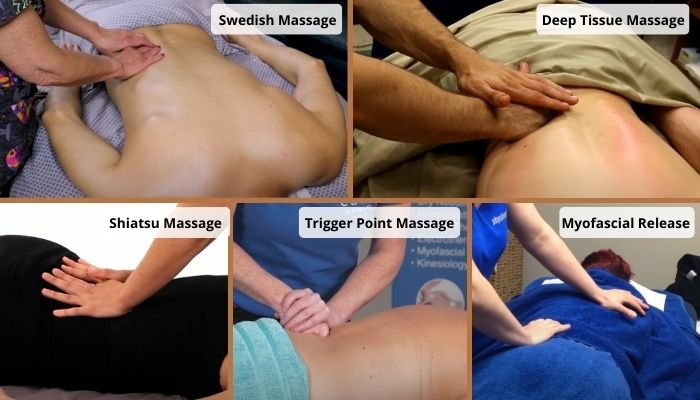
Numerous massage therapy techniques can potentially ease lower back pain, but the effectiveness can vary depending on the cause and nature of the pain. Here's a closer look at five massage types commonly recommended for lower back pain.
Swedish Massage
Swedish massage is one of the most well-known types of massage therapy. It involves various techniques such as long, gliding strokes, kneading, and vibration, all designed to relax the entire body, which indirectly can relieve muscle tension in the lower back.
How it helps lower back pain: By improving circulation and relaxing muscles, Swedish massage can help to alleviate the muscle tension often associated with lower back pain.
Deep Tissue Massage
As the name suggests, deep tissue massage targets the deeper tissue structures of the muscle and fascia, also called connective tissue. It involves slow, deliberate strokes that focus pressure on layers of muscles, tendons, or other tissues deep under your skin.
How it helps lower back pain: By targeting the deeper layers of muscle and connective tissue, deep tissue massage can be beneficial for chronic aches and pain in the lower back. It can also help with muscle tightness and stiffness.
Shiatsu Massage
Originating in Japan, Shiatsu massage uses finger and palm pressure to stimulate energy pathways known as meridians. It is intended to improve the flow of "Qi" (vital energy) in the body.
How it helps lower back pain: Shiatsu massage may help to reduce lower back pain by realigning the meridians in the body, thus improving the body's internal healing capabilities. It can also relieve stress and tension, which are often associated with chronic back pain.
Trigger Point Massage
This type of massage focuses on areas of tight muscle fibers or knots that can form in muscles due to overuse or injury.
How it helps lower back pain: Trigger point massage can alleviate pain by focusing on and releasing "trigger points" in the lower back, which can radiate pain to other parts of the body.
Myofascial Release
Myofascial release involves applying gentle, sustained pressure to the myofascial connective tissues. These tissues surround and support the muscles throughout your body.
How it helps lower back pain: Myofascial release can be beneficial for lower back pain by releasing tension in the fascia surrounding the muscles in the lower back. This can restore motion and reduce pain.
Each of these types of massage therapies has its unique approach and benefits. It's essential to consult with a professional massage therapist or healthcare provider to identify the best approach based on your specific symptoms, medical history, and overall health.
How to Choose the Right Massage for Your Lower Back Pain
Selecting the right type of massage therapy for your lower back pain can feel overwhelming, especially when faced with so many options. Here are a few guidelines to help you make the right decision:
Consulting with a Professional
The first step in choosing the right massage therapy is consulting a professional. This could be a massage therapist, physical therapist, or your healthcare provider. They can help you understand the root cause of your back pain and suggest the most suitable type of massage therapy based on your specific symptoms and overall health condition.
Personal Preferences
While professional advice is important, personal preference also plays a significant role. For instance, some people may prefer the gentler touch of a Swedish massage, while others might find more relief from a deep tissue or trigger point massage. If you're new to massage, you might want to start with a less intense style and gradually move to more intensive techniques.
Considering the Severity and Nature of the Pain
The severity and nature of your pain will also impact your choice of massage therapy. For instance, if your pain is muscular in nature, a deep tissue or trigger point massage may provide the most relief. However, if your pain stems from an issue with your spine itself, you may find better results from a technique that focuses on overall relaxation and stress reduction, such as Swedish massage.
Assessing the Benefits and Risks
Before making a final decision, consider the potential benefits and risks associated with each type of massage therapy. While massage is generally safe, certain types may not be appropriate for people with specific health conditions. For example, deep tissue massage may not be suitable for individuals with blood clotting disorders or on certain medications.
Trying Different Techniques
Don't be afraid to try out different techniques. It can often take a bit of trial and error to find what works best for you. Remember, the goal is to find a type of massage that provides you with the most relief and aligns best with your comfort level and health goals.
Choosing the right type of massage therapy should be a collaborative process between you and your healthcare provider or massage therapist. Don't hesitate to ask questions, express your preferences, and provide feedback to ensure you receive the most beneficial treatment.
Precautions and Contraindications for Massage
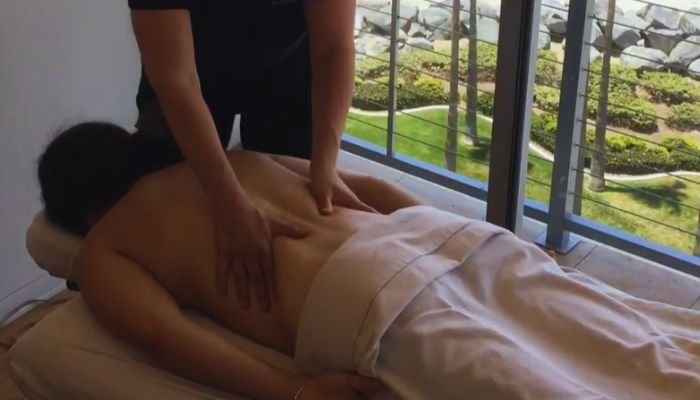
While massage therapy can offer numerous benefits, certain situations and conditions may warrant caution or suggest avoiding massage altogether.
When massage should not be used
There are certain circumstances in which massage therapy may not be the best course of action. These can include:
Before starting massage therapy, a professional assessment is critical. This will ensure that the therapy provided is safe and effective for your specific needs. A qualified massage therapist or other healthcare provider can carry out this assessment, taking into account your medical history, current health status, and the nature of your lower back pain.
Possible side effects of massage
While generally considered safe, massage therapy can sometimes lead to side effects. These can include temporary discomfort or pain, fatigue, and in rare cases, minor bruising. Drinking plenty of water after a massage can help to flush out any toxins released during the massage and can reduce these side effects. Always communicate with your therapist during the session if you're experiencing pain or discomfort, as they can adjust their technique accordingly.
Using Back Massagers at Home for Lower Back Pain
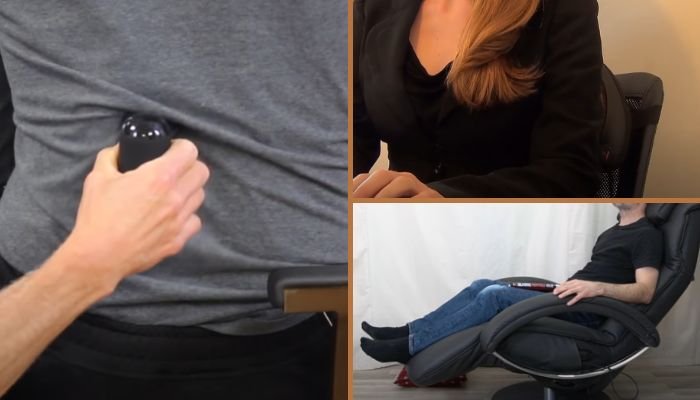
Back massagers can be a convenient and effective tool for managing lower back pain from the comfort of your own home. They allow you to apply massage techniques that can loosen tense muscles, increase circulation, and promote relaxation. Here's a guide on how to use back massagers at home to alleviate lower back pain.
Types of Back Massagers
Handheld Massagers: These are versatile devices designed to target specific areas of the body. They usually come with different attachments and intensity levels, making them suitable for various needs.
Cushion/Pillow Massagers: These massagers can be placed on a chair or bed, allowing you to lean against them for a soothing massage. They often come with heat settings for added relief.
Chair Massagers: These can range from massage pads fitting over a chair to high-tech, full-sized massage chairs. They provide a more comprehensive massage experience, often with customizable settings.
Choosing the Right Back Massager
If your pain is localized to one area, a handheld massager may be sufficient. If you prefer a more immersive, full-back experience, a chair massager could be more beneficial. Consider factors such as adjustability, heat function, portability, and cost when choosing a massager.
Using the Back Massager
Here are some steps on how to use a back massager effectively:
Read the Instructions: Before using any massager, thoroughly read the user manual to understand how to operate it safely and effectively.
Position the Massager: For handheld massagers, apply them to the area of pain or tension. For pillow or chair massagers, ensure they are properly positioned to target your lower back.
Start Slowly: Start with a gentle setting to allow your muscles to warm up before gradually increasing the intensity.
Use Heat if Available: If your device has a heat function, consider using it. Heat can help to further relax muscles and enhance the therapeutic effects of the massage.
Don't Overdo It: Limit your massage sessions to 15-20 minutes at a time to avoid overstimulating the muscles.
Safety Considerations
While back massagers can be beneficial, they should not replace professional medical advice. Consult with a healthcare provider before using one, especially if you have a pre-existing condition. Stop using the massager if it causes pain or discomfort.
Back massagers can be an effective tool for managing lower back pain at home. When used properly, they can complement professional massage therapy, providing additional relief and making it easier to manage your symptoms on a daily basis.
The Role of Self-Care in Managing Lower Back Pain
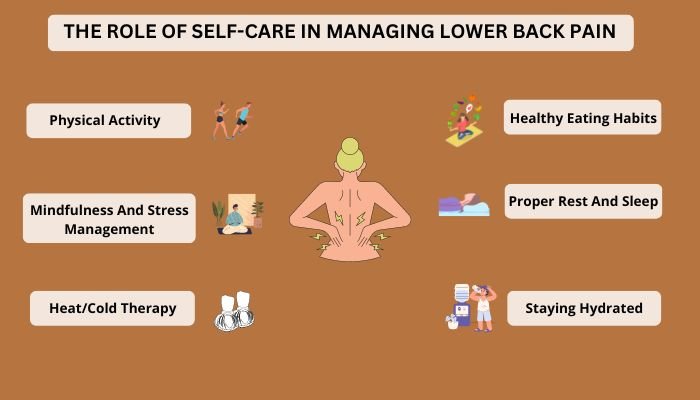
In addition to professional interventions like massage therapy, self-care plays a critical role in managing lower back pain. This involves implementing practices and habits that promote overall health and well-being. Engaging in regular self-care activities can help enhance the benefits of massage therapy, extend periods of relief, and empower individuals to have a more active role in their pain management journey.
Physical Activity
Regular physical activity is a cornerstone of lower back pain management. Exercise can improve flexibility and strength, particularly in the core muscles, which play a significant role in supporting the lower back.
Additionally, physical activity promotes good circulation, aiding in nutrient distribution and toxin removal, which can aid in healing and pain reduction. Examples of beneficial exercises include low-impact activities like swimming, yoga, and walking.
Healthy Eating Habits
Maintaining a balanced diet is another crucial aspect of self-care when managing lower back pain. Certain foods are known for their anti-inflammatory properties, including fruits and vegetables, whole grains, lean proteins, and healthy fats. By reducing inflammation, these foods can potentially alleviate some of the pain associated with lower back issues.
Mindfulness and Stress Management
Chronic lower back pain can often lead to mental stress, creating a vicious cycle of pain and tension. Implementing mindfulness practices such as meditation, deep-breathing exercises, and yoga can help manage this stress, promoting relaxation and a better sense of well-being.
Proper Rest and Sleep
Adequate rest and good sleep hygiene are vital for the body's healing processes. Rest allows your muscles to recover, and sleep is when most healing occurs. Ensure you have a comfortable sleeping environment and try to keep a consistent sleep schedule.
Regular Use of Heat/Cold Therapy
At-home heat or cold therapies can be beneficial in managing lower back pain. Cold can reduce inflammation and numb pain, while heat can relax muscles and improve circulation. Alternating between the two can often provide relief.
Staying Hydrated
Hydration is vital for overall health and can also contribute to pain reduction. Water aids in nutrient distribution and toxin removal, helping to keep your body and specifically your muscles functioning properly.
In conclusion, while professional interventions like massage therapy are crucial in managing lower back pain, the role of self-care cannot be overstated. Incorporating these self-care practices into your routine can help maintain and enhance the benefits of massage, leading to more prolonged periods of relief and a better quality of life.

